|
|
|
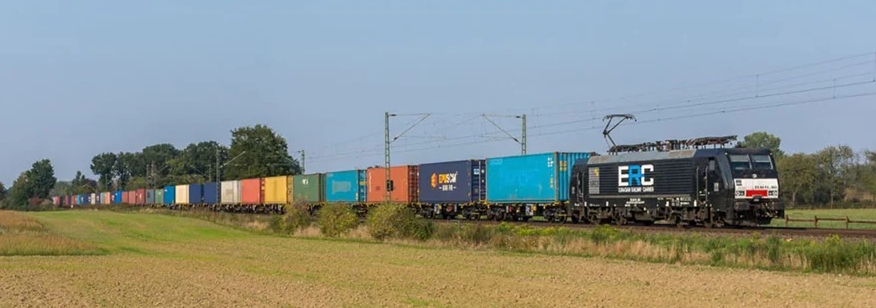
A.P. Moller - Maersk First Block Train from Southern West Europe to Asia
June 17, 2021 - This new Maersk´s intermodal service has moved its first 37 x 40 containers in 32 days. The cargo was sent by truck from Cartagena, Spain, to Madrid during May. From there left via block train to Duisburg, Germany, and from there all the way to Hefei, China, using Małaszewicze, Poland as the EU exit point. Final destination is Nansha, capital of Guangdong Province, where the block train will arrive by the end of June.
“There is a limited ocean capacity right now on the eastbound services. In our constant effort to cater for our customers’ needs, we have tailored a solution for an important chemical company, integrating various transport modes to provide them high flexibility as well as reliability to transport their chemical products,” explains Javier Marin, South West Europe and Maghreb Head of Intermodal at Maersk.
Transporting chemical cargo needs extra dedication as it requires high levels of complexity. Intercontinental rail is a good choice and can add value and alternative solution to chemicals supply chain, securing greater resilience.
For this first of its kind eastbound block train from Southern West Europe to Asia, Maersk has partnered with RTSB, the leading railway operator along the Eurasian corridor.
“We will continue to work with rail partners to provide fast and reliable service to our customers. This intercontinental block train has been able to stand by its schedule, delivery times and swift transit clearance on time, creating firm ground for further expansion of transcontinental transit. To the extent that, we are currently working on arranging another one to Shanghai, in this case with 41x 40 containers,” adds James Seale, Product Manager at Maersk.
Maersk continues scaling up its service to meet the growing demand of all our customers on rail. In fact, A.P. Moller - Maersk train services between Asia and Europe todays serves 30 different countries across multiple routes both east and west bound.
SOURCE: A.P. Moller - Maersk |
|
Norske Skog Saugbrugs and Bergene Holm Reduce Emissions by Moving From Trucks to Train
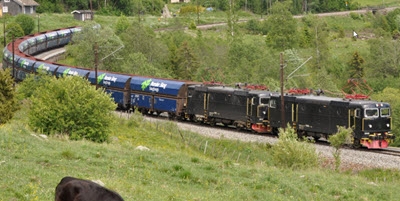 June 8, 2021 - The transport of timber and wood chips between Larvik and Norske Skog Saugbrugs in Halden has long taken place using trucks. Norske Skog is now using trains on the stretch, which will significantly reduce CO2 emissions from the transport. June 8, 2021 - The transport of timber and wood chips between Larvik and Norske Skog Saugbrugs in Halden has long taken place using trucks. Norske Skog is now using trains on the stretch, which will significantly reduce CO2 emissions from the transport.
The train line will transport timber and wood chips from Bergene Holm in Amundrod near Larvik to Norske Skog Saugbrugs in Halden. The transport to the east will consist of an approximate 50/50 split between wood chips from the sawmill at Amundrod and pulpwood from surrounding forests. In return, Bergene Holm will transport sawn timber from the Halden area to the sawmill at Amundrod.
“Norske Skog Saugbrugs works actively to streamline the flow of goods in and out of the factory at the same time as we have set high sustainability goals. With the railway freight of wood chips from Larvik to Halden, we will remove 800 truck loads from the roads. This is a good traffic safety measure, but will also be an excellent environmental improvement as CO2 emissions are reduced,” says Kjell Arve Kure, CEO of Norske Skog Saugbrugs.
Thanks to Norske Skog Saugbrug's strategy of moving transport from road to rail, by the end of 2021 the company will annually have a total of 7 500 fewer lorries on Norwegian roads compared with 2015. Following the introduction of all transport measures, Norske Skog Saugbrugs will have reduced CO2 overall emissions for inbound timber and wood chip logistics by just over 25 per cent.
Erland Lokken, CEO of Bergene Holm, explained, “Bergene Holm transports 7-800 lorries from the factory in Larvik to Norske Skog Saugbrugs. Using the train both directions between the proposed terminal in Larvik and to Halden will provide environmentally friendly and efficient transport between the mills.
“Today's terminal in Skien is not an appropriate or environmentally efficient location for Bergene Holm as it is located in the wrong geographical direction and increased transport distances and costs result in negative environmental accounts. The train will also contribute to securing the raw material supply to the sawmill in Larvik by allowing sawn timber to be returned,” Lokken added.
Norske Skog's transition from road to rail has already begun, made possible by previously completed rebuilding to increase the capacity for receiving industrial chips in Halden. The train transport from Amundrod to Norske Skog Saugbrugs started already on 20 November 2020, but requires further measures to reduce transport costs. The most important measure is to move the loading and unloading station from Borgestad to Larvik Harbor. The Port of Larvik has applied to Larvik Municipality for permission to do so. The municipality's processing of the application will be completed with meetings of the chairmanship and the municipal council, on 9 and 16 June, respectively.
In addition to lower greenhouse gas emissions, traffic safety will also benefit from Norske Skog's initiative by removing thousands of trucks from the roads. Locally, the measures will also contribute to reduced airborne dust and less emissions of exhaust in places such as Oslo and Halden.
About Norske Skog Saugbrugs
Norske Skog Saugbrugs has 400 employees, turnover of approximately NOK 2.0 billion, and production capacity of 330 000 tonnes SC magazine paper targeting markets in Europe and North America. Saugbrugs produces 2.0 million normal cubic metres of biogas annually.
SOURCE: Norske Skog |
|
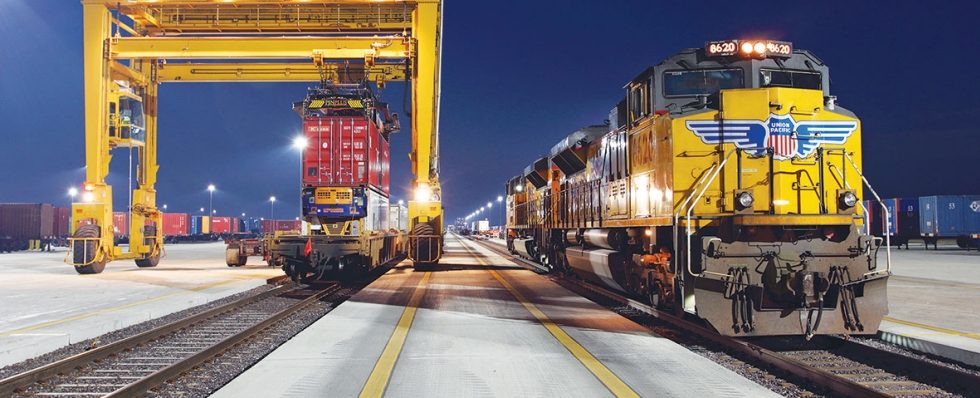
Union Pacific Opening New Southern California Terminal in Major Import Distribution Region
May 4, 2021 - Union Pacific announced plans to open a new intermodal terminal in the heart of Southern California's import distribution region. It is the fastest growing region of industrial warehousing and continues to be a leader throughout the United States. Located near the Ports of Los Angeles and Long Beach, the new terminal will open in the second quarter of 2021, providing customers' expanded access to Chicago and other key markets.
"We are excited to expand our intermodal presence and do it where we can reduce truck traffic on California's highways, cut drayage costs and compete effectively for domestic intermodal freight," said Kenny Rocker, Executive Vice President - Marketing and Sales. "Inland Empire Intermodal Terminal demonstrates our commitment to intermodal and the strength of Union Pacific's franchise to grow quickly and strategically using our existing footprint."
Union Pacific will start by establishing a "pop-up" terminal at its West Colton rail yard. Domestic intermodal service will launch between Southern California and Chicago, with expected future service to Dallas and southeast markets.
Union Pacific has the largest intermodal network in North America, with the most direct services from coast to coast.
SOURCE Union Pacific Corporation |
|
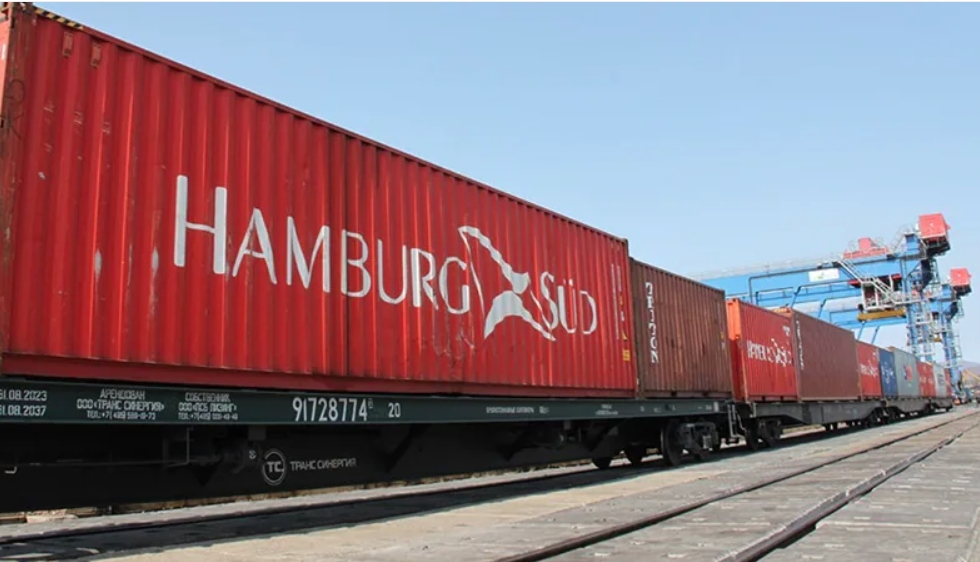
Maersk Launches AE77, a Weekly Asia-Southern Europe Intermodal Freight Service
April 26, 2021 - The first containers coming from Asia on this new regular service arrived at the largest Russian port of Vostochny on Sealand vessels. On 22nd April, the containers were dispatched by train from the Russian VSC terminal (– part of Global Ports Inc.) to NUTEP terminal (– part of Delo Ports) at the port of Novorossiysk, also on Russia soil. From Novorossiysk, the cargo now resumes by sea to destinations in Ukraine and Turkey.
“The launch of AE77 is an important milestone in Maersk´s expansion of our transcontinental intermodal offering, combining rail and sea. The new route is an excellent alternative since our customers can be confident about fixed-day arrival and have full flexibility between various delivery options that best match their logistics needs,” explains Zsolt Katona, Head of Maersk Eastern Europe.
“Our ultimate aim is offering our customers a reliable and flexible option, a service that runs without bottlenecks, and with fast transit times of about 25 to 30 days,” Katona added.
Like Maersk’s AE19 intermodal service from Asia to Northern Europe, this new AE77 service from Asia to the Black Sea and the East Mediterranean area uses the Trans-Siberian route. The largest part of the trip takes place across Siberia using the Russian railways’ infrastructure, arranged in cooperation with rail company Modul.
Given the increasing customer demand of these two services, A.P. Moller – Maersk has deployed an additional vessel between Busan, at the Southern part of the Korean peninsula, and Vostochny, the intermodal container port at the Eastern end of the Trans-Siberian Railway.
“Together with our partners we continue to launch new transit services between Europe and Asia. These intermodal solutions are offering outstanding transit times, fixed schedule and competitive pricing,” comments Alexey Shilo,” Deputy General Manager at Russian Railways (RZD).
Transportation on the AE77 is covered with Maersk regular Bill of Lading and uses Maersk standard booking platform.
A.P. Moller - Maersk is an integrated container logistics company working to connect and simplify its customers’ supply chains. As the global leader in shipping services, the company operates in 130 countries and employs approximately 80,000 people.
SOURCE: A.P. Moller - Maersk |
|
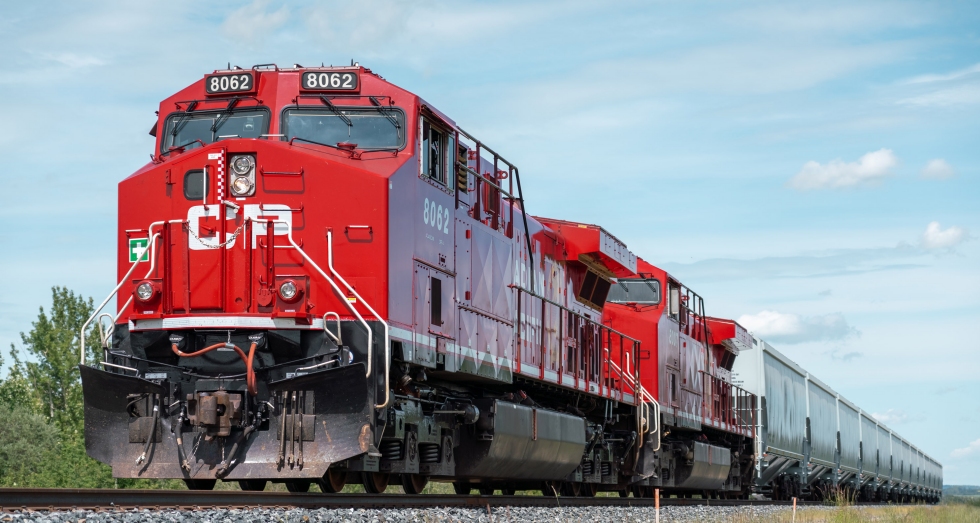
CP Announces Hydrogen-Powered Locomotive Pilot Project
Jan. 28, 2021 - Canadian Pacific (CP) recently announced that it plans to develop North America's first line-haul hydrogen-powered locomotive. CP's Hydrogen Locomotive Program will retrofit a line-haul locomotive with hydrogen fuel cells and battery technology to drive the locomotive's electric traction motors. Once operational, CP will conduct rail service trials and qualification testing to evaluate the technology's readiness for the freight-rail sector.
"This is a globally significant project that positions CP at the leading edge of decarbonizing the freight transportation sector," said Keith Creel, CP's President and Chief Executive Officer. "CP will continue to focus on finding innovative solutions to transform our operations and adapt our business, positioning CP and our industry as leaders for a sustainable future."
The work builds on CP's prior experience with testing low-emitting locomotive technologies, including biofuels, compressed natural gas and battery-powered solutions. Nearly the entire freight locomotive fleet of all railway operators in North America consists of diesel-powered units, representing the industry's most significant source of greenhouse gas emissions.
CP has long focused on energy-saving initiatives as a core component of its sustainability practices. Since 1990, CP has improved its locomotive fuel efficiency by more than 40 percent through a variety of programs and technology deployments designed to improve fuel economy and reduce air emissions. The application of leading practices, emerging technologies and relationship building across the value chain and industrial sector will remain critical as CP addresses the climate change challenge.
Canadian Pacific is a transcontinental railway in Canada and the United States with direct links to major ports on the west and east coasts. To learn more, visit: www.cpr.ca
SOURCE: Canadian Pacific (CP) |
|
|
|
|
<< first < Prev 1 2 3 4 5 6 7 8 Next > last >>
|
|
Page 4 of 8 |